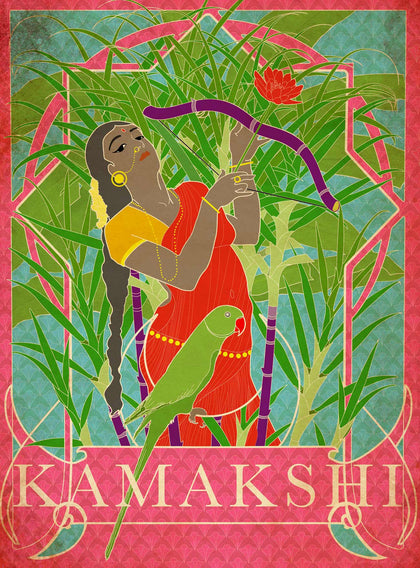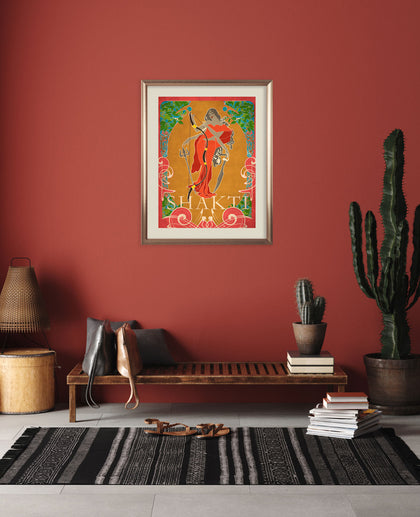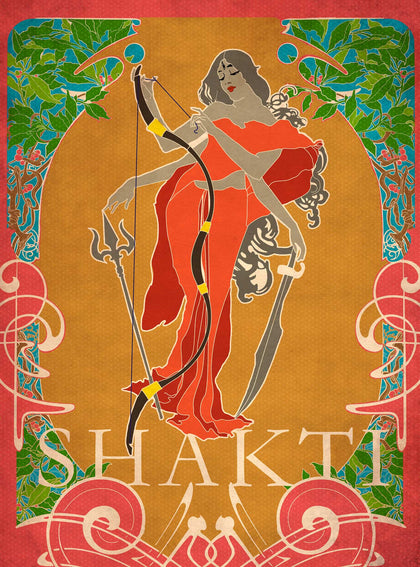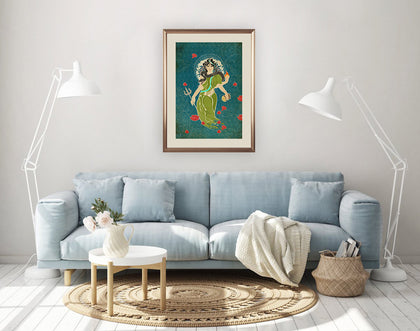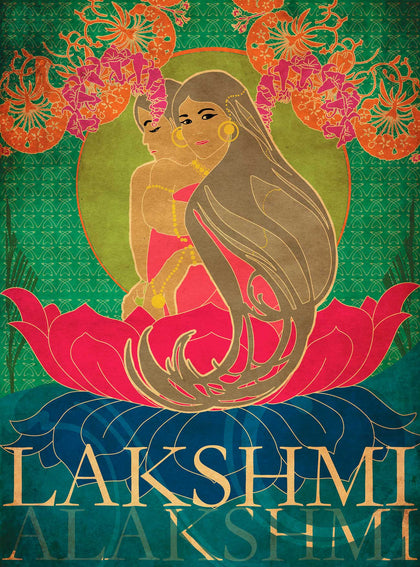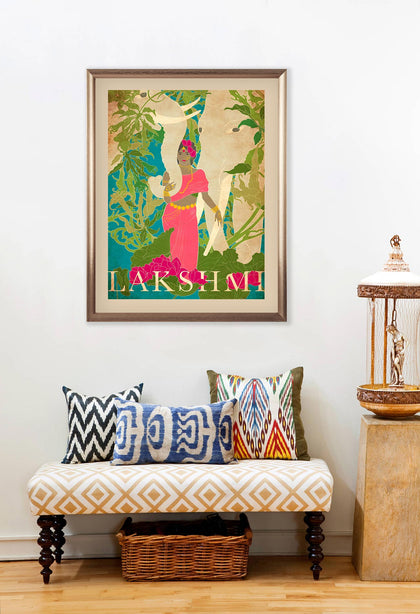Description
An image of Devi arises from the night around us and slowly changes over centuries, turning the sky into daylight. Hidden behind flickering flames, the memories of her as the dark ferocious one have endured. She is the mother of the tribe, alive and awake in the caves of deep forests, as she is also a newer, more approachable goddess, floating amongst the clouds. She changed, as her people did, gazing skyward towards new gods, escaping the impulse of nature. They had now set about to control it. In their process of burning forests to farm and dividing land to fence, they dressed her in silk with bangles and turmeric, hoping to awaken her maternal side.
With the glow of a forest fire behind her, the blood taking Kali, was now also the milk giving Gauri. And still her true worshipers sacrificed ram and rooster to rewild their mother. She, who has the power to create life by destroying it. For them there is no terror or solitude in her presence.
Still, through marriage and maternity, the goddess harmonized nature with spirit. Suddenly surrounded by male gods she was – the female force that powers and animates. The energy with which Brahma creates the world, her husband Shiva tries to renounce while her brother Vishnu protects.
As her larger family unfolded, paving a path away from the jungle, the Devi remained true to all her forms - wild, free, powerful and replete with uncontrollable energy. She is the life – defender, lover, creator, and finally the destroyer.
About the Series:
This artwork is part of the “Sister Misfortune” series, through which the artist, Smruthi Gargi Eswar, narrates lesser-known stories from Indian mythology, while reflecting on the narrative surrounding women in our culture. Various Indian goddesses (devis) are depicted with a refreshing artistic lens.
In India, there is a constant burden on women to be “Devi-like”. Through this series, the artist attempts a reverse deification of the goddesses, making them appear like real women, in a real world. The series is an exploration not just of duality, but of multiplicity. It compels us to question our attitudes - women towards themselves, men towards women. How does the idea of a goddess coexist within every woman? How do we, as a society, so casually dismiss, disrespect, disregard, and defile in our everyday existence, those who we have bedecked with gold and enshrined in a temple?























































































 View Full Screen
View Full Screen































